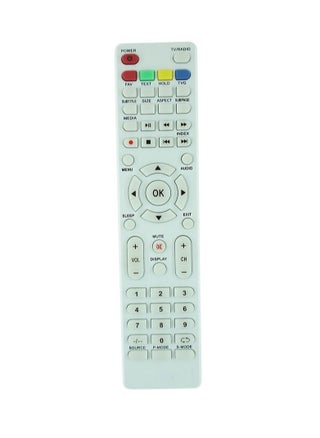Overview
Highlights
Wireless Connectivity: Remote controls utilize either infrared or radio frequency technology for wireless communication, enabling users to operate devices from a distance without the need for direct line-of-sight.
Versatile Compatibility: Designed to control a diverse range of devices, from TVs and audio systems to smart home appliances, providing users with a centralized and convenient means of managing their electronic devices.
Intuitive User Interface: Featuring a user-friendly layout with clearly labeled buttons, remote controls facilitate easy navigation, allowing users to adjust settings and execute commands effortlessly.
Ergonomic Design: Meticulously designed for user comfort, remote controls consider factors such as size, shape, and button placement to ensure a satisfying tactile experience during prolonged use.
User-Friendly Interface: Designed with an intuitive layout, remote controls feature easily identifiable buttons for straightforward navigation and seamless execution of commands.
Overview
A remote control is a ubiquitous device that has become an integral part of modern technology, enhancing the convenience and accessibility of various electronic devices. It serves as a handheld interface, allowing users to wirelessly operate and control electronic appliances, entertainment systems, and other gadgets from a distance. The widespread use of remote controls has revolutionized the way we interact with and manage our devices, providing a level of convenience and efficiency that was previously unimaginable. Functionality: The primary function of a remote control is to transmit signals to a corresponding device, instructing it to perform specific actions. This communication is typically achieved using infrared (IR) or radio frequency (RF) technology. The range and capabilities of a remote control vary depending on the technology employed and the device it's designed for. Versatility: Remote controls are incredibly versatile, catering to a broad spectrum of devices. From television sets and audio systems to air conditioners, ceiling fans, and even smart home devices, remote controls streamline the operation of numerous appliances, making them an indispensable tool in the modern household. User Interface: The design of remote controls often includes a user-friendly interface with clearly labeled buttons and functions. This intuitive layout enables users to navigate menus, adjust settings, and execute commands with ease. Some advanced remote controls feature touchscreens or voice recognition technology, further enhancing the user interface and providing a more interactive experience. Smart Home Integration: With the rise of smart home technology, remote controls have evolved to integrate seamlessly with various connected devices. Smart home remotes allow users to control lighting, thermostats, security systems, and other smart appliances, offering a centralized and convenient way to manage their interconnected home environment. Ergonomics and Design: Manufacturers pay careful attention to the ergonomic design of remote controls to ensure user comfort during prolonged use. The size, shape, and placement of buttons are meticulously considered to provide an intuitive and satisfying tactile experience. Additionally, some remote controls boast sleek and modern designs, complementing the aesthetics of the devices they control. In conclusion, the remote control has transcended its initial role as a simple device for changing TV channels. It has become a universal tool that empowers users to interact effortlessly with a wide array of electronic devices. As technology continues to advance, remote controls are likely to evolve further, potentially incorporating features such as artificial intelligence and enhanced connectivity to keep pace with the demands of an increasingly interconnected and automated world.
Free & Easy Returns
Best Deals


